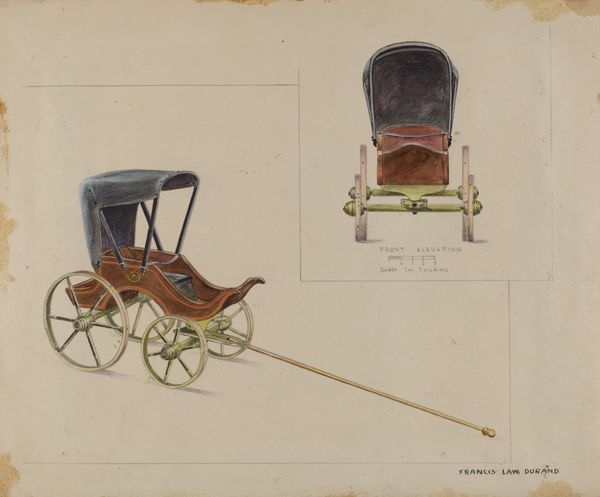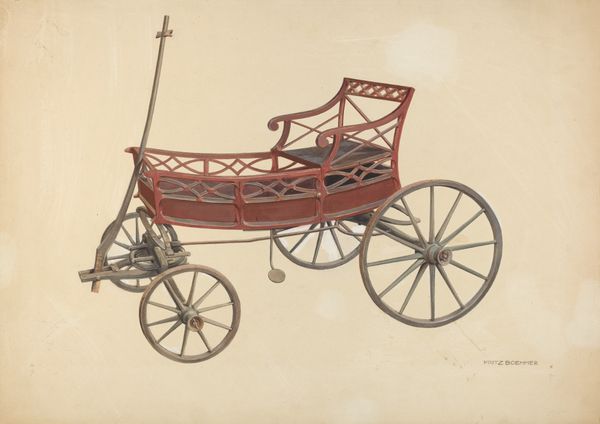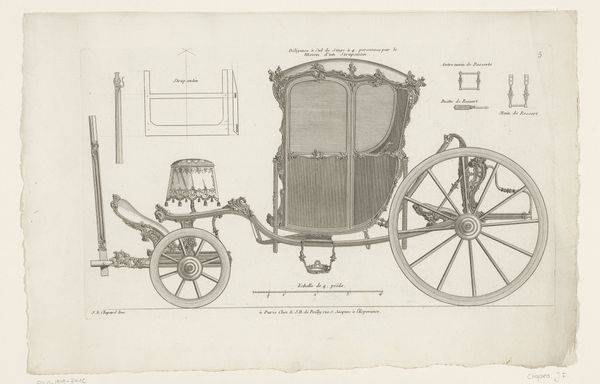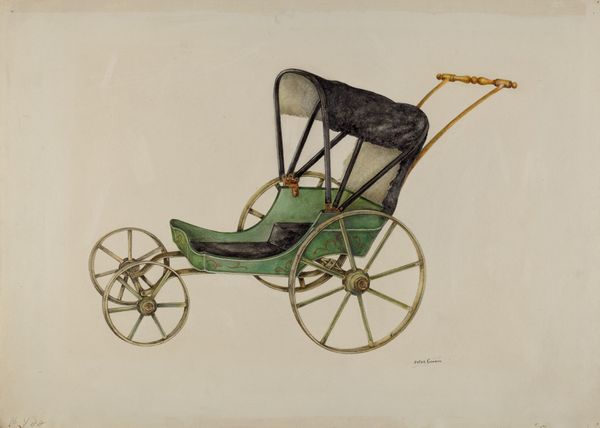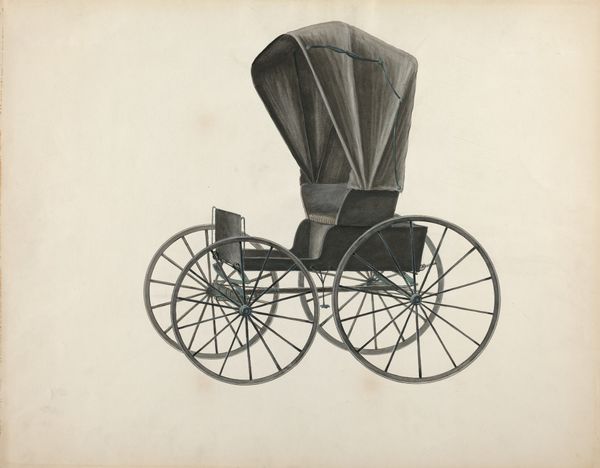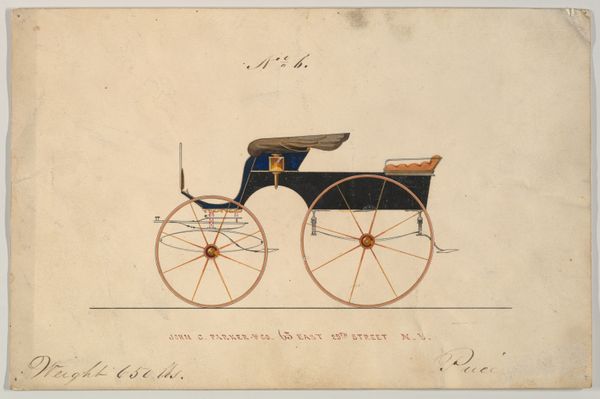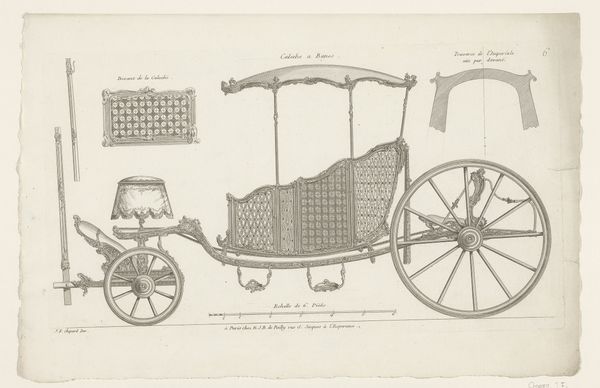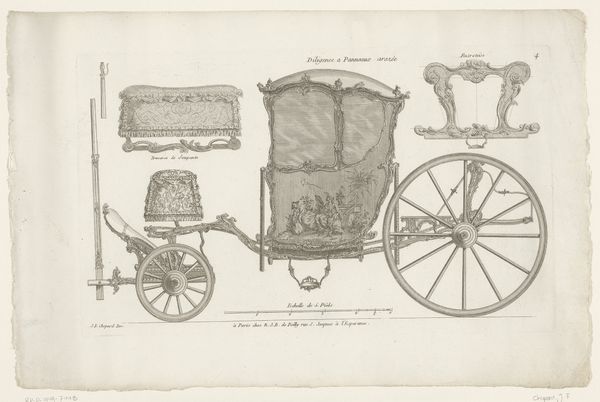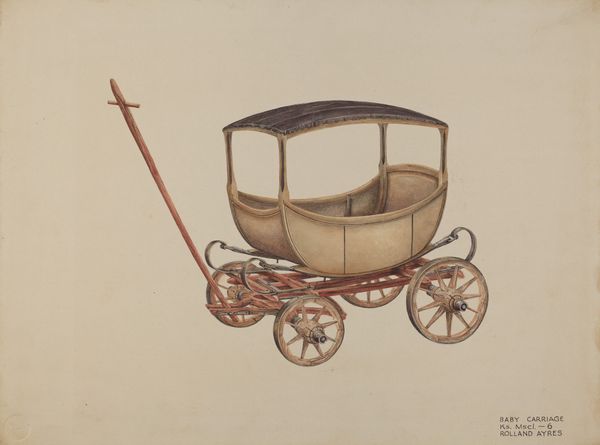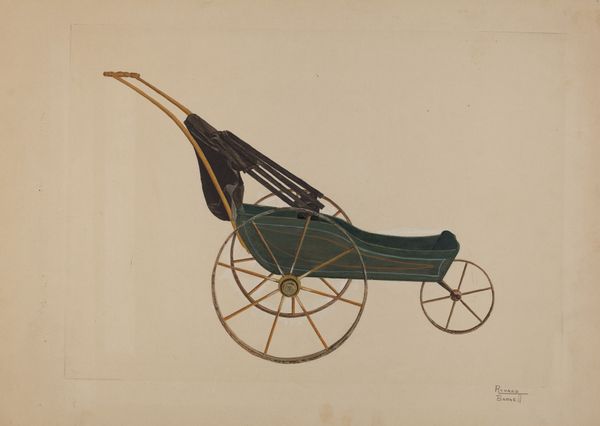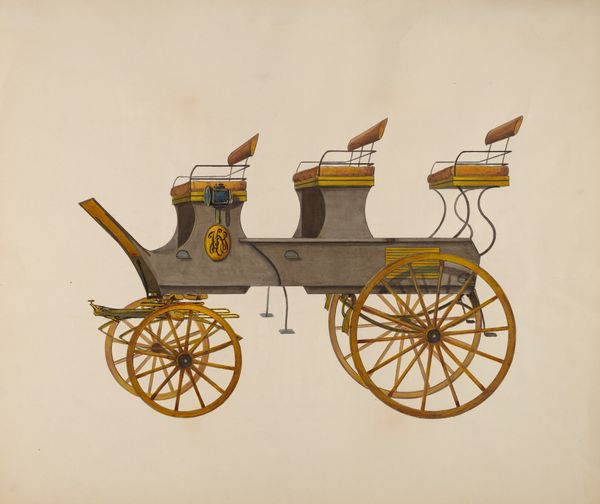
drawing, watercolor
#
portrait
#
drawing
#
pencil sketch
#
watercolor
#
geometric
#
watercolour illustration
Dimensions: overall: 35.5 x 27.2 cm (14 x 10 11/16 in.) Original IAD Object: 54" long; 40" high; 22 1/2" wide
Copyright: National Gallery of Art: CC0 1.0
Curator: Here we have Kurt Melzer's "Baby Carriage," a drawing, dated circa 1936, rendered in watercolor. It depicts a meticulously detailed design for, well, a baby carriage. Editor: My first thought is that it's quite technical and strangely beautiful. There's a melancholic feel to the faded colors and the precision of the drawing. It reminds me of a blueprint for a dream that never materialized. Curator: That's an interesting read. Seeing it in a broader historical context, Melzer, a lesser-known name, was working during the interwar period. One can only wonder about the significance a meticulously crafted baby carriage held for a society grappling with anxieties surrounding its future generations and social inequalities, during that moment in history. It's almost like this isn't simply a functional design, but an aspirational piece about safety and progress, when there were few certainties. Editor: I can appreciate that point of view. Taking a slightly different angle, I see a negotiation of gender roles. The artistic composition seems to fetishize and confine traditional concepts about motherhood at a specific socioeconomic intersection; in doing so, I see both resistance and a desire for freedom through a focus on design. The artist appears to both reject and participate in the artistic language he engages with. Curator: Precisely. Considering the precision, with the back view scaled 1/2 inch to a foot, and the section of the upholstery, it points towards both aspiration and luxury. Its existence as a watercolor drawing suggests its own paradox because instead of a rendering in steel and textile, it is realized through fine art techniques. The tension here seems to capture something complex regarding family and commercialism in pre-war society. Editor: Ultimately, it's an arresting image and an encapsulation of multiple anxieties. One level could read it as quite cynical about where the traditional institutions of child-rearing and domesticity were headed during that time, but also quite beautiful in how it represents something quite new regarding the family. The baby carriage, elevated from its function, reveals new modes of social analysis as it exists as an illustration and perhaps a document of loss. Curator: Yes, there’s a feeling of things unsaid in the very visible lines of the design, and a certain longing for a future.
Comments
No comments
Be the first to comment and join the conversation on the ultimate creative platform.
